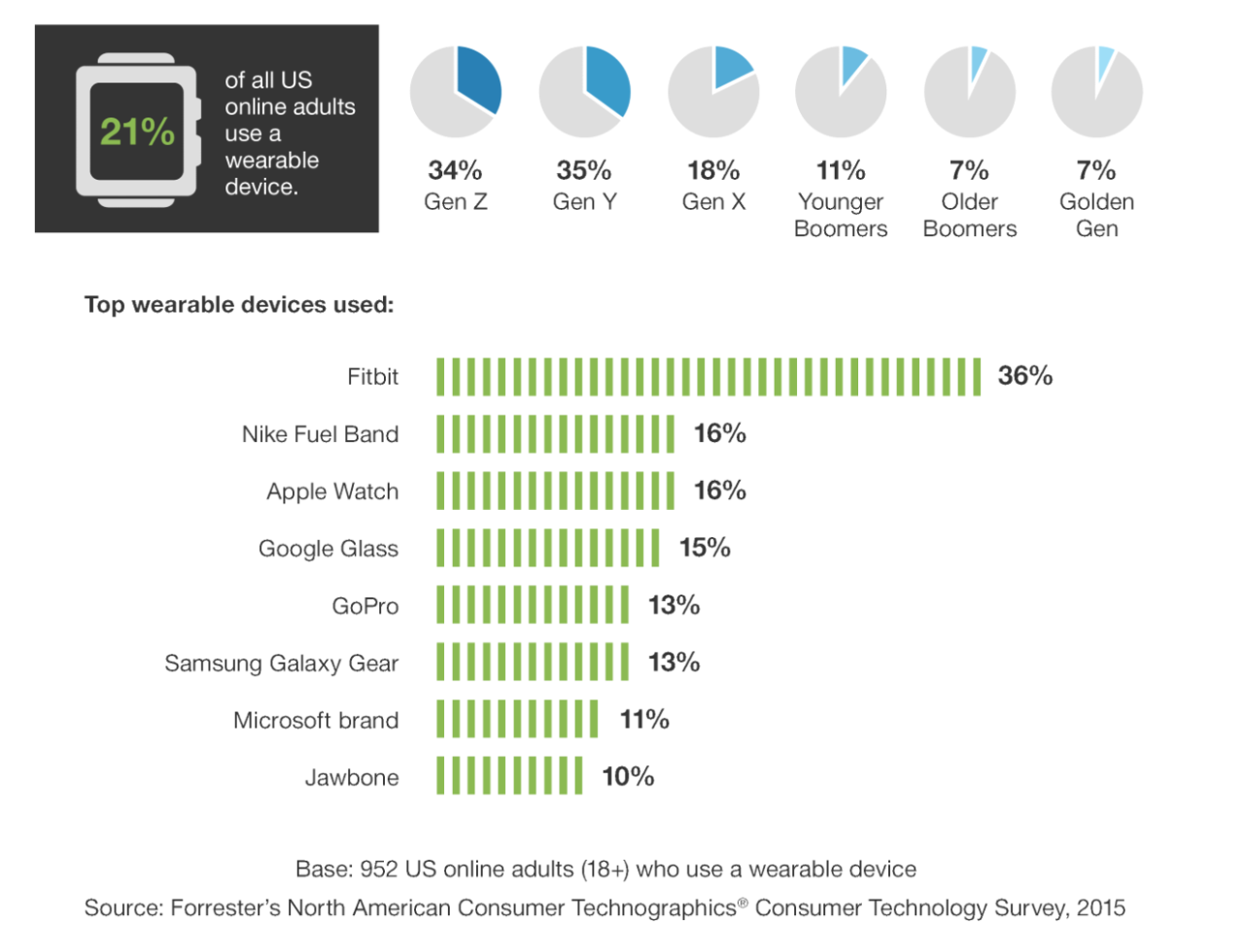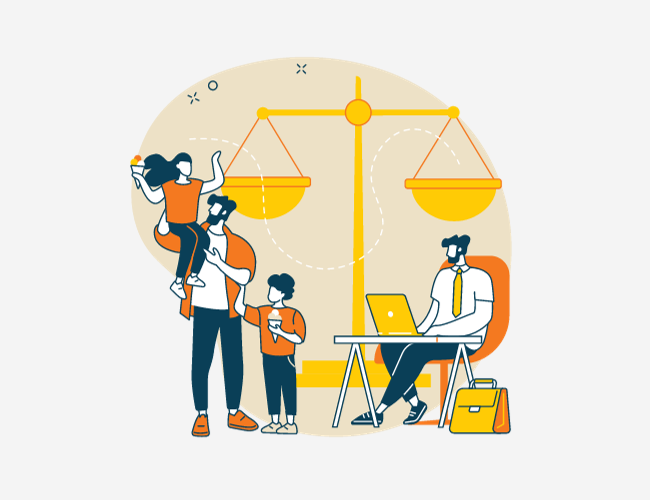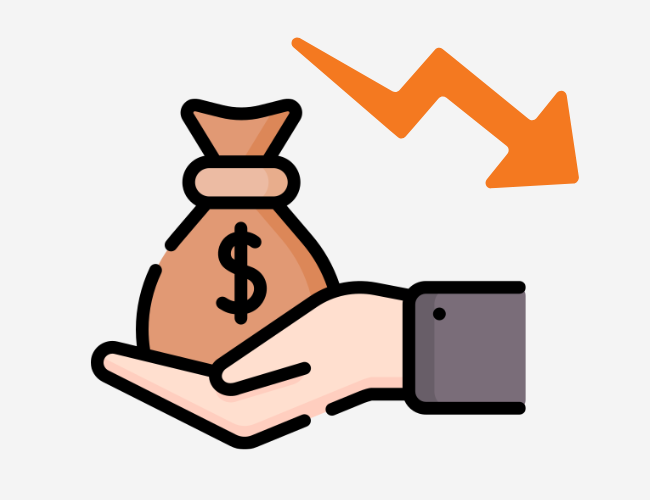No one questions the explosive adoption of wearable devices across the U.S. We see it through ourselves, our friends, and our colleagues. We also see it in numerous bodies of research, including a new report from Forrester that provides granular data on wearable adoption by age groups and market share by device.
According to the report, 21% of U.S. online adults use a wearable device. Generation Y (millennials) and Generation Z (born after ~1993) have the greatest adoption with 35% and 34% of each cohort using a wearable device, respectively. Also, an impressive 11% of younger Baby Boomers use a wearable device.
Of the device manufacturers, Fitbit is the clear market leader with 36% market share with the discontinued Nike FuelBand in second with 16%. A number of other well-recognized brands have double-digit market share including Apple, Microsoft, and Jawbone, highlighting the wide array of wearables available for consumers to choose from.

This data reaffirms our belief in a bring your own device (BYOD) wellness strategy for corporate wellness programs. A BYOD strategy means that employers choose not to purchase fitness wearables for their employees. The data from the Forrester report supports this strategy. First, a significant percentage of employees already own a wearable device and purchasing another one for them would be a waste of money. Second, all employees are individuals and have unique preferences for which device makes the most sense for them. This is most evident by the significant number of competitors with meaningful market share. The Apple Watch experience is very different than a Fitbit one, and someone who prefers an Apple Watch will not adhere to the Fitbit device that was given to him or her. The attrition rate on Fitbit is already 70% so a free device that doesn’t suit one’s preferences will certainly have a similar, if not higher, drop-off rate. Employers can save money and have better results in their program by using a BYOD strategy.













